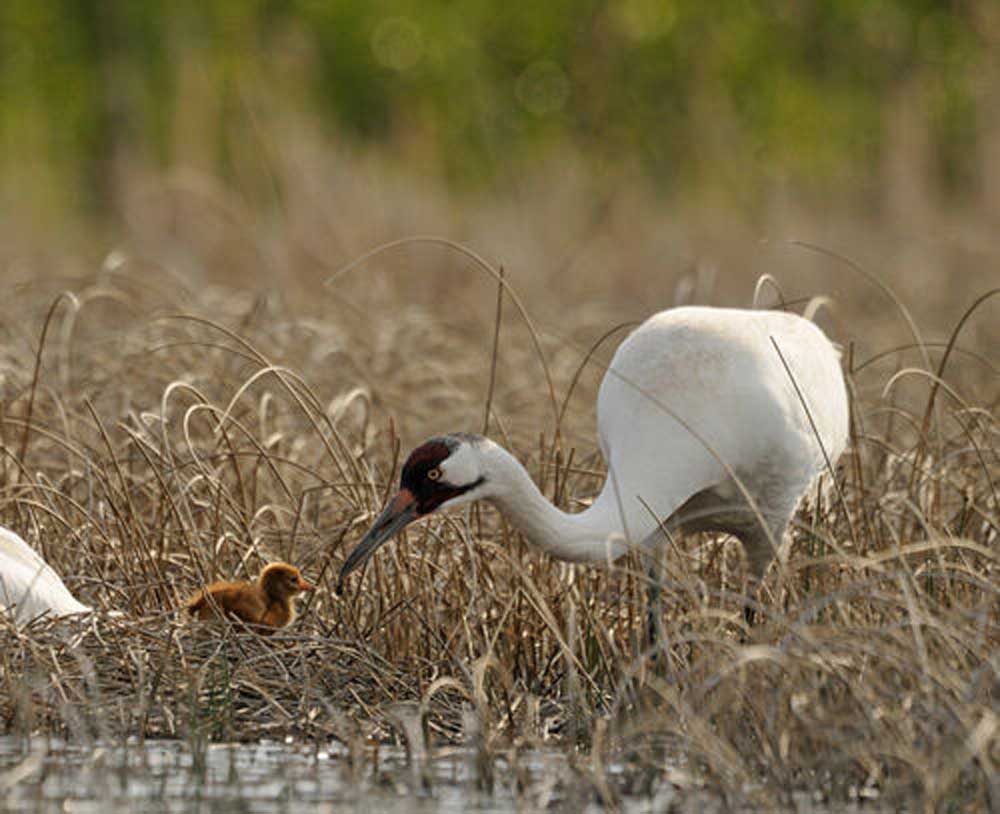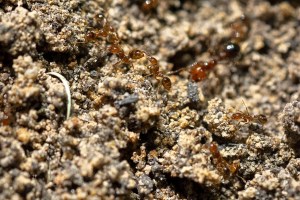Up And Coming: Whooping cranes returning to Texas as numbers climb
Published 3:44 pm Thursday, November 18, 2021

- Texas Cranes
Everyone roots for the underdog, and when it comes to birds there is none bigger in North America than the whooping crane.
Down to just 15 adults in 1938, whooping cranes have clawed their way back from the brink of extinction. Although still at a precarious level, there are now about 900 birds in captivity and three wild populations.
Trending
The majority of birds, more than 500, are expected to end their fall migration from their nesting grounds in Alberta, Canada’s Wood Buffalo National Park to the Texas coast where they will remain until late March.
“On our last winter estimated, we calculated the population the winter before last because we didn’t get to count last year because of COVID, at 506,” said Wade Harrell, U.S. Fish and Wildlife Service whooping crane recovery coordinator. “We are quite sure the population has grown since then.”
Harrell said the population expansion prediction is based on this summer nesting counts in which 102 nests were seen in Canada and 50 chicks reportedly survived. Harrell said that is the first time the nesting count has topped 100.
Along with the birds known as the western flock, which winter in Texas, New Mexico and into Mexico, there is also an eastern population most of which nests in Wisconsin and winters in Florida, and a nonmigratory flock in Louisiana. The eastern population began in 2001, started with pen-reared birds re-introduced to the wild. There are only about 75 birds in that population.
The Louisiana population was started in 2011 also using pen-reared birds. There were 70-plus birds at last count.
“The reason we re-introduced birds in Louisiana was because there was an historic population, but they were gone in the 1940s. They seem to be doing fairly well,” Harrell said.
Trending
He explained that because of the lack of protection and loss of some birds and decimation of habitat by hurricanes, the Louisiana population dwindled to a single bird. Efforts were made to transplant the bird to Aransas in 1950 with hopes it would assimilate into the Texas wintering flock, but it did not work.
The remainder of the birds alive today are kept in captivity as stock to add birds tothe eastern and Louisiana population.
Historically there were never a lot of whooping cranes in North America. Biologists estimate the population topped at about 10,000. In comparison Texas winters about 700,000 sandhill cranes, the only other species of crane in North America. Sandhill cranes can be hunted with hunters required to have both a state hunting license and a federal crane permit.
Besides a difference in size, sandhills are about a foot shorter than the 5-foot tall whooping cranes, sandhill cranes utilize a greater diversity of habitat.
“I think sandhillsare more of a generalist habitat species. They seem to have been able to adapt to modern agriculture better. Whoopers have more of a need for high quality wetlands, although we do see whoopers in migration use dry-land farming,” Harrell explained.
And that specific need for habitat is another potential strike against whooping cranes going forward as Texas coastal wetlands disappear. While the Aransas refuge is best know as the cranes’ winter home, Harrell said at least half of the birds coming to Texas rely on private property or other sites.
Considering only about 180 of the birds were migrating into Texas at the turn of this century, the recovery has to be considered a success.
“Our population that migrates through the central plains is growing about 4 percent a year. For a long-lived, slow-reproducing species recovery is slow but steady,” Harrell explained.
A monogamous species, whooping cranes do not become sexually mature until they are 4 or 5, and then they typically only fledge a single chick every other year.The birds have been known to live into their late 30s in the wild and mid-40s in captivity and often reproduce into their mid-20s. That means a pair could potentially produce 10-12 offspring in a lifetime.
With numbers as low as they have become, the lost of a single bird for whatever reason is amplified and can slow the overall recovery of the species.
“We did some population modeling and under a best-case scenario it looks like the wild wintering population coming to Texas could double from the current size in 20 to 25 years,” Harrell said.
Unlike the Texas birds that are primarily migratory, the Louisiana population remains in the coastal swamps year-around. Their recovery is coming at a slower rate.
“It is a smaller, younger population and does not quite increase at the growth rate the wild population is. It is going to need some help along the way. We will need to help with some chicks raised in captivity,” Harrell said.
Biologists are uncertain why members of a species do not migrate, but the most logical explanation is that they all their needs are full-filled in one location and do not need to expend energy migrating.
In 2021, two breeding pairs of whoopersfrom the Louisiana population attempted to nest on private property in Chambers in Jefferson counties. Although their efforts were unsuccessful, they are believed to be the first nesting pairs in Texas since the late 1800s.





